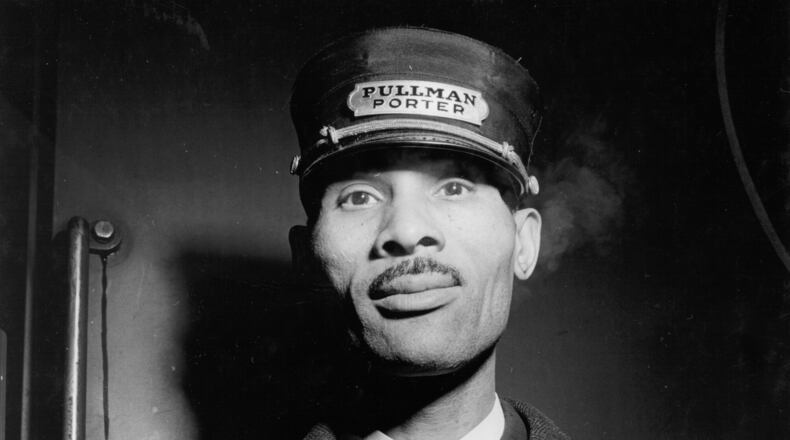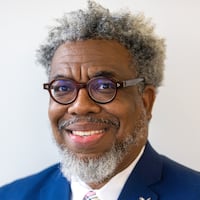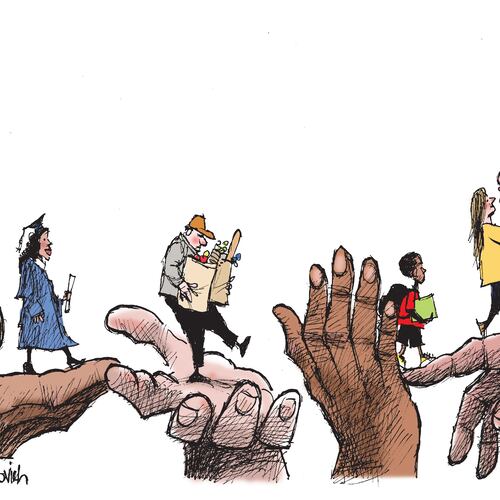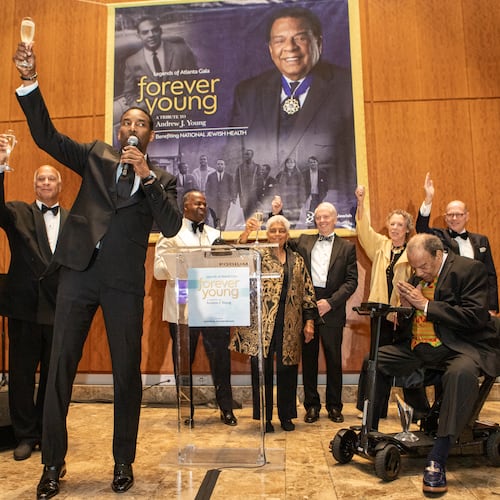Sometimes, dignity can come with something as simple as a name tag.
In 1925, dignity came for the Brotherhood of Sleeping Car Porters when the organization got a charter from the American Federation of Labor.
The men were issued name tags.
Since the Pullman Company began employing Black men — many former slaves — as porters to wait on passengers in 1867, they were simply called “George” as a derogatory acknowledgment that they were “owned” by the company’s founder, George Pullman.
Credit: Sam Patton
Credit: Sam Patton
But that changed when the Brotherhood of Sleeping Car Porters became the first labor organization led by African Americans.
“When the union started, it gave the porters more powers over their lives, higher pay, more reasonable working conditions and nameplates,” said Larry Tye, author of “Rising From the Rails: Pullman Porters and the Making of the Black Middle Class.” “When they got their own name tags, that gave them a sense of pride and dignity. They could point to the nameplate and say, ‘This is my name.’”
This year marks the 100th anniversary of the founding of the Brotherhood of Sleeping Car Porters by labor organizer and civil rights activist A. Philip Randolph.
Credit: ASSOCIATED PRESS
Credit: ASSOCIATED PRESS
“They were earning more money than any Black men in that era, with the possible exception of postal workers. They were seeing the country in a way that Black men didn’t have a chance to do,” Tye said. “And they were listening to what their white passengers, who were the leading figures in commerce, science and the arts, were saying. They were reading newspapers and books that they left behind.”
Between its founding and eventual demise in 1968 — as the lure of rail travel had given way to the automobile and air travel — porters came back to their communities with stories, influence, money and ideas about how the country could work.
In 1867, just two years after the Civil War, Pullman, a Chicago business owner, began hiring Black men to serve white passengers in his company’s luxury railroad sleeping cars.
Pullman’s strategy was simple.
In order to convince people that they were getting an upper-class experience and to spend money, he figured that former slaves would know best how to cater to their every whim.
Credit: Library of Congress
Credit: Library of Congress
“He was looking for people who had been trained to be the perfect servant. And he knew they would come cheap, so he paid them next to nothing,” Tye said.
Pullman recruited men to lug baggage, shine shoes, set up and clean sleeping berths and serve passengers.
By the early 1900s, when other companies were not hiring African Americans, the Pullman Company became the largest single employer of Black men in the country. Porters made up about 44% of the Pullman Company’s rail operations workforce.
Credit: Library of Congress
Credit: Library of Congress
For many in the Black community, with its steady stream of income, being a Pullman porter was one of the most coveted jobs in America. But they were underpaid and overworked, often toiling 400 hours a month on a set salary, all while enduring a constant stream of racism.
Frustrated that the American Railway Union had refused to accept Black railway workers, which by 1925 had swelled to more that 10,000 porters, Randolph led a push to form the Brotherhood of Sleeping Car Porters. the brotherhood’s motto was “Fight or Be Slaves.”
In 1937, after years of resistance, the Pullman Company signed a contract with the union, which led to higher salaries, better job security and increased protection for workers’ rights through grievance procedures.
Credit: ASSOCIATED PRESS
Credit: ASSOCIATED PRESS
“As important as is this lucrative contract as a labor victory to the Pullman porters, it is even more important to the Negro race as a whole,” the NAACP’s “Crisis” magazine wrote at the time. “From the point of view of the Negro’s uphill climb for respect, recognition and influence and economic advance. ”
Members of the brotherhood of porters, including Randolph, would go on to play a key roles in the Civil Rights Movement, helping to influence public policy in the South and nationally.
One of the key early figures of the Montgomery bus boycott was Edgar Daniel “E.D.” Nixon, who served as president of the local chapter of both the NAACP and Montgomery, Alabama, branch of the Brotherhood of Sleeping Car Porters.
Credit: AP
Credit: AP
Nixon was spending so much time out on the trains so he needed help.
“But he saw that there was a smart young minister in town named Martin King,” Tye said. “So he deputized him to take over the (Montgomery bus) boycott.”
King, who was the pastor of the Dexter Avenue Baptist Church in Montgomery, became the face of the local movement.
“They were a big deal, but a forgotten deal in the history of Black American,” Tye said of the union.
“They were forgotten because we only have room for a limited number of facts. If you mention civil rights, you mention Martin Luther King, but not E.D. Nixon, who recruited him. Nor A. Phillip Randolph. If King was the father of civil rights in America, Randolph was the grandfather.”
Credit: AP
Credit: AP
Randolph, who led the union for more than four decades, eventually became a mentor to King. In 1963, when King delivered his “I Have a Dream” speech, it was at the March on Washington, which was crafted and organized by Randolph.
At its height, the Brotherhood of Sleeping Car Porters had a membership of over 18,000 passenger railway workers across Canada, Mexico and the United States.
Tye estimates that when his book came out in 2004, there were about 20 living Pullman porters.
Credit: Library of Congress
Credit: Library of Congress
Now there are none.
“They all played a significant role,” Tye said. “Not just in the development of Black America, but the development of America.”
ABOUT THIS SERIES
This year’s AJC Black History Month series, marking its 10th year, focuses on the role African Americans played in building Atlanta and the overwhelming influence that has had on American culture. These daily offerings appear throughout February in the paper and on ajc.com and ajc.com/news/atlanta-black-history.
Become a member of UATL for more stories like this in our free newsletter and other membership benefits.
Follow UATL on Facebook, on X, TikTok and Instagram.
About the Author
Keep Reading
The Latest
Featured











